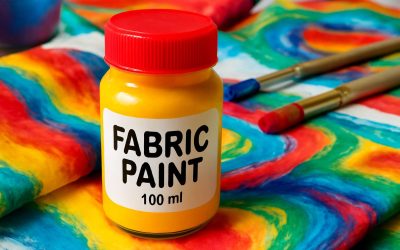
Whether you’re just looking for a way to spruce up your wardrobe or you’ve got a special piece of clothing that you want to make more personal, fabric paint is a great option. It’s not only a fun craft project, but it can also help you save money on your favorite clothes by revamping them with your own creative flair.
There are many different types of fabric paint, but they all have a few common characteristics: They are either water-based or alcohol-based. They come in a variety of colors, are easy to use and are available in both liquid and gel forms. They also have a high coverage area, and some can be used to create dimensional lines and designs.
Choose a Color
There’s a wide selection of colors to choose from, with some being more vibrant than others. If you’re unsure what color to pick, be sure to test it on a small section of the material first.
You may need to experiment with a few different paints until you find the ones that work best for you. Some paints are more prone to bleeding than others, so it’s important to choose one that won’t seep through the fibers and cause it to bleed.
For example, a fabric paint that is water-based will tend to bleed and seep more easily than an alcohol-based option. This means you’ll need to work a little more carefully, and it’s also recommended that you add a sealant to prevent your painted design from fading with time.
Brushes and Applicators
Depending on what you’re painting, you’ll need a few different kinds of brushes to get the job done. These include flat-tip brushes, shader brushes and liner brushes. Each type of brush has a different purpose and can be used for shading, highlighting, or line work.
The brush’s tip needs to be able to hold the paint so that it is able to easily saturate the material. This can vary from one brand to the next, so it’s important to try them out before making a purchase.
If you’re painting on a darker fabric, such as denim, it’s a good idea to begin by applying a base layer of white fabric paint to the surface. This will make the colors pop more and allow you to paint lighter colors on top of them without blending too much.
Be sure to let this base layer dry completely before you apply your other colors. This will ensure that the colors will meld well with each other and the fabric will be as stable as possible when you’re finished.
Draw the Design on Paper Before Using Permanent Fabric Paint
If your design is going to be painted on fabric, it’s best to draw it out in pencil first. This will help you avoid mistakes that can be very difficult to fix if the fabric is already painted. You can even practice it on a sheet of surplus fabric before you start working on your garment!



0 Comments